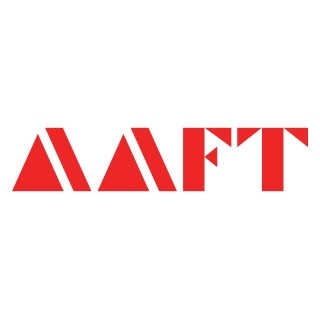Top Culinary Arts Trends to Watch in 2025 and Beyond
The food and beverage industry is rising at a staggering rate. With time, new trends are also constantly emerging to meet changing consumer preferences. Therefore, understanding and anticipating these trends are hugely helpful for businesses to stay competitive throughout the corporate ecosystem. This approach ensures that they thoroughly remain relevant and innovative with time.
Here are the top food trends to watch out for, as we are on the verge of witnessing 2025, as described by institutes with the best Hotel Management Courses After the 10th. These trends depict the hallmark of the dynamic nature of the elevated consumer demands and the industry’s commitment to innovation, sustainability, and personalized experiences.
Top Culinary Art Trends in 2025
It’s a no-brainer that these new trends are constantly emerging to meet changing consumer preferences. All the businesses who are actively taking part in this sector, profoundly understand these trends and are competing to not weigh loose with time.
Here are the top food trends that every Hotel Management aspirant (not just businesses) to watch in 2025 after completing their Hotel Management Course.
1. Ethnic Fusion
Do you want free career counseling?
Ignite Your Ambitions- Seize the Opportunity for a Free Career Counseling Session.
- 30+ Years in Education
- 250+ Faculties
- 30K+ Alumni Network
- 10th in World Ranking
- 1000+ Celebrity
- 120+ Countries Students Enrolled
Global flavors are constantly influencing menus. These menus are blended with traditional ethnic cuisines, transforming into unique mash-ups. According to the latest statistics, 58% of consumers are interested in fusion cuisine, and thus, culinary experimentation is steeping. This trend offers an exciting opportunity for chefs after completing their Hotel Management Courses After the 12th to create innovative dishes that captivate diverse palates and cultures.
2. Plant-Based Evolution
The plant-based movement is slowly regaining its pace as in the 19th century. These innovations cover plant-based meats, dairy, and seafood, which are more appealing and accessible. In another report, the market is likely to touch $74.2 billion by 2027, which reflects a strong rate of annual growth. This evolution is attributed to increasing consumer demand to ensure sustainable and health-conscious food choices.
3. Lab-Grown Foods
Cultivated meats and dairy products are becoming the popular choices among the sustainable alternatives to traditional animal farming. They carry a lot of health benefits and also contribute to the reduced greenhouse effects.
Book Now →
4. Functional Foods
Foods also have health benefits that go further than basic nutrition. These, including those fortified with probiotics, prebiotics, and superfoods, are regaining their prominence. This functional food market may expect to grow robustly in the coming years.
5. Zero-Waste Cooking
Sustainability efforts are driving zero-waste cooking, where Professional Chefs, after completing their Hotel Management Courses After the 12th , and home cooks, use every part of an ingredient in practice. This practice helps reduce a lot of food waste and promotes sustainability to address the global issue of food waste.
6. Regenerative Agriculture
With the steeping awareness of environmental preservation, farming practices that restore and enhance soil health, biodiversity, and ecosystems are becoming more common and popular among professionals. Among these, regenerative agriculture is likely to pose significant climate change by sequestering CO2 emissions. This approach may not only benefit the environment but also produce more nutritious and flavorful food choices.
Do you want free career counseling?
Ignite Your Ambitions- Seize the Opportunity for a Free Career Counseling Session.7. Personalized Nutrition
Advancements in technology are enabling personalized nutrition approaches, including DNA-based diets and meal plans tailored to individual health needs. This market is expected to grow substantially, reflecting a shift towards customized health solutions. Personalized nutrition offers consumers targeted dietary recommendations for optimal health and wellness.

Conclusion
We hope you liked this stunning post on culinary art trends of 2025. Staying ahead of food trends is hugely vital for prominent professionals in the food and beverage industry. From ethnic fusion and plant-based evolution to lab-grown foods and functional foods, these top culinary trends (stated here) for 2025 reflect a robust focus on sustainability, health, and innovation.
By staying informed about these trends, businesses of the food and beverage professionals who have completed their Hotel Management Courses After the 10th can remain competitive and innovative, meeting the evolving demands of consumers.
We hope you liked this informative post. For more information about Sound Design, or if you are looking to enroll in any of our Hotel Management Courses in Delhi, connect with our AAFT team today!
Frequently Asked Questions (FAQs)
Emerging trends and technologies are transforming how we eat and perceive food production. Here are some insights into the brightened future of the culinary landscape:
What are the Gen Z food trends in 2025?
Today’s generation is more drawn towards the ‘spicy’ revolution. This approach has forced the culinary market to shift to the combination of sweet and spicy flavors in the most surprising ways.
What is next-generation food technology?
The next generation of food technology is the Agrifood System. It works by tackling crucial issues such as food security, sustainability, and health. Therefore utilizing advanced technologies and sustainable practices, these innovations also offer exciting gastronomic experiences and address pressing global challenges.
What is the next big thing in food technology?
Artificial intelligence (AI) could be termed as the next big thing in food technology. It is slowly regaining change at an intuitive pace. Its transformative impact spans across the entire food supply chain. This ranges from predictive analytics in agriculture to AI-enhanced food processing and distribution.
Are chefs paid well in India?
The typical starting gross salary for a career in India ranges from ₹15T – ₹30T for a beginning-level professional. Entry-level positions such as commis chef or line cook are common, as they offer valuable learning opportunities through hands-on experience and guidance from seasoned chefs.

AAFT has been providing the world with limitless creativity and expression since 1993! Through a dynamic and industry-driven curriculum, AAFT provides engaging and captivating articles to persuasive blogs and empowers its readers to explore diverse avenues of creative media education-related content.






